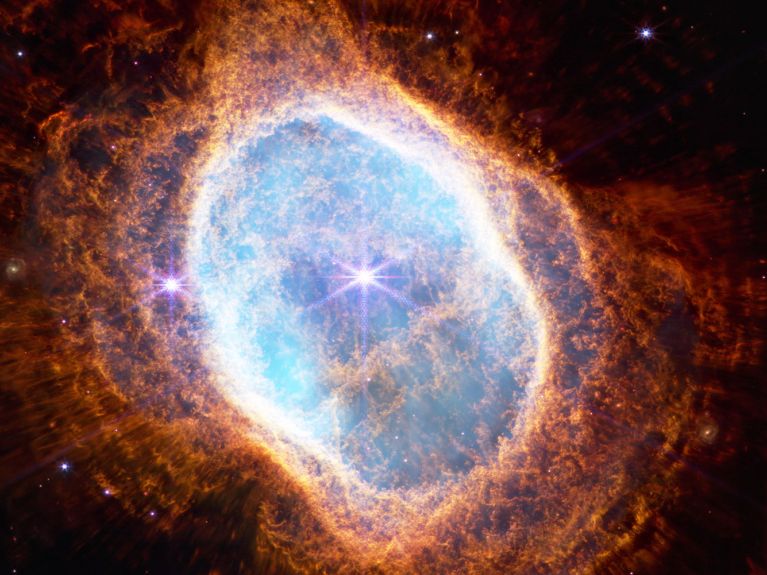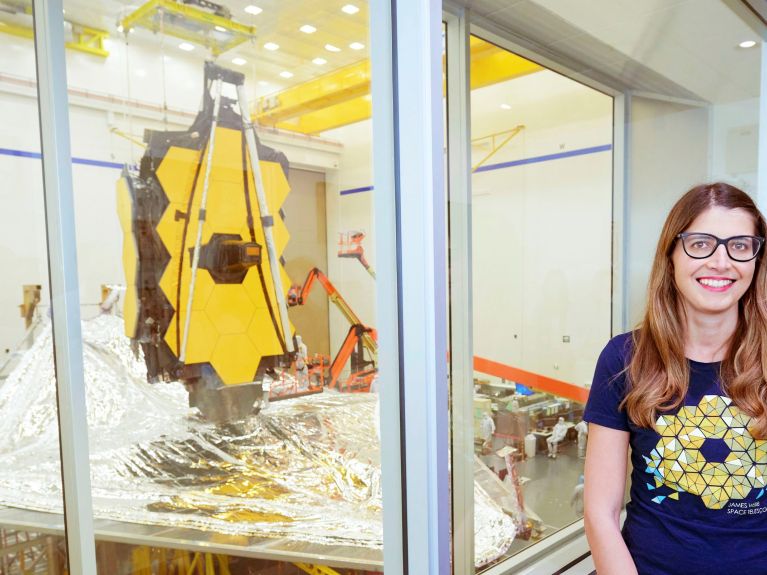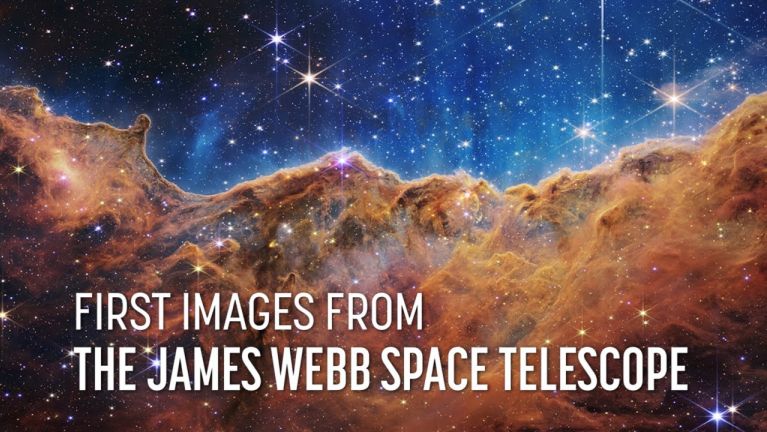“Incredibly exciting”
The astronomer Nora Lützgendorf talks about her work with the James Webb Space Telescope and another spectacular large-scale project.

When she gazes into the depths of space she sees more than most: the astronomer Nora Lützgendorf from Germany works for the European Space Agency (ESA) in the US city of Baltimore. She is involved there in two spectacular large-scale projects: the James Webb Space Telescope and the LISA discovery mission. Read our interview about impressive images, Lützgendorf’s unusual career path and research into black holes.
Dr Lützgendorf, the first impressive images taken by the James Webb Space Telescope were seen worldwide in July 2022. How did you experience this moment?
Though I was one of the experts who were able to view the images two days before they went public worldwide, it was still incredibly exciting for me, too. I was at least able to prepare myself somewhat for the media frenzy sparked by the publication of the pictures and to think also about questions that extend beyond my specialist areas. The day of publication was both extremely stressful and really great – after all, I got to spend the whole day talking about these fascinating images.
Dieses YouTube-Video kann in einem neuen Tab abgespielt werden
YouTube öffnenThird party content
We use YouTube to embed content that may collect data about your activity. Please review the details and accept the service to see this content.
Open consent formWhat impressed you in particular?
I find the spatial resolution of the images simply spectacular and have spent hours scrolling through them. I kept discovering something new, such as a background galaxy. The image that impressed me the most was one of planetary nebula that looked a bit like a coral reef. The extremely vivid three-dimensional picture was amazing.
Which areas do you focus on in your work at the Space Telescope Science Institute in Baltimore?
My exact job title is Instrument and Calibration Scientist. On the James Webb Space Telescope, I work on the NIRSpec, an instrument we use to detect the infrared radiation of the oldest galaxies. Our team makes sure that NIRSpec supplies correctly calibrated data. On this basis, our colleagues can correctly interpret the information about the formation of the galaxies.
After completing your PhD at Ludwig-Maximilians-Universität (LMU) München you spent two years working as a postdoc at the ESA’s European Space Research and Technology Centre in the Dutch town of Noordwijk, and from there you moved directly to NIRSpec in 2015. What’s it like to end up working on such a flagship project at such an early stage in your career?
To be honest I can still hardly believe it myself. Prior to NIRSpec I had only ever done scientific work; doing technical work on such an instrument was a new experience for me. But what I can tell you is that it was incredibly good fun! We are a really great team and have played our part in ensuring that the James Webb Space Telescope will allow outstanding science to be carried out long term. For me personally, another major mission is my central focus.

Can you tell us a bit more about it?
I am part of the ESA’s LISA discovery mission as a study scientist. From the mid-2030s, LISA will be the first gravitational-wave observatory in space. Observing gravitational waves can play a key part in detecting black holes. Black holes have always been the main subject of my research, and LISA is the best mission imaginable in this field.
What fascinates you about black holes?
They are pure gravitational force. But we do not know a lot about them. LISA can change this. I specialise in middleweight black holes, which are particularly difficult to detect. They are too large to identify in a binary star system. At the same time, however, they do not attract as much matter as supermassive black holes. Yet the merger of middleweight black holes offers among other things one possible explanation why supermassive black holes already formed at the dawn of our universe. And in purely fundamental terms they are crucial if we are to understand how our universe came about.



